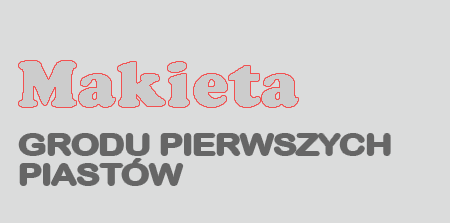 |
| ABOUT THE MODEL |
|||||||||
|
|
The model shows the appearance of Poznań during the times of the first Piast dynasty rulers. The form and the arrangement of the settlement dates back to the first quarter of the 11th century, the times of the rule of Bolesław I the Brave and his son Mieszko II. Such a precise and faithful reproduction of the buildings from a thousand years ago was possible thanks to the cooperation with the scientists from Poznań, from the designing stage until the last model tree was stuck in the royal forest. In the beginnings of its existence, Poznań was located entirely on an island created by the rivers Warta and Cybina. The four-segment settlement consisted of a central part with the prince’s palace, the eastern part with the cathedral, the northern part where the inhabitants' shelters were placed, and the southern part called Zagórze. What attracts particular attention is the cathedral situated in the central point of the model. The seat of the bishopric was certainly one of the most magnificent buildings of the young Polish state. The model also shows how well protected the city of Poznań was in the 11th century. The Warta formed a natural moat from three sides and the boggy fields of its overflow area were periodically flooded. The only way to the city led over the wooden bridges which, the in case of danger, were burned. An additional protection against aggressors were wooden framed earth banks, which for the military technology of the period constituted an unsurpassable barrier. The model does not only show the medieval buildings of Poznań, but also the life of its citizens. The city is teeming with life and every person has a certain task to fulfill in the efficiently working mechanism. Freight boats and fishermen's boats are going along the river, in the suburb a blacksmith is shoeing a horse, and some builders, under a careful eye of a grey-haired old man walking with a cane, are finishing one of the earth banks. Suspending our sight on another spot on the model we see a white cat climbing up a wooden structure of a house which is being built. The attention of the viewer is attracted by silhouettes of mysterious wanderers approaching the city on their horses. Maybe it’s the prince returning from a trip in the nearby wood? The model took three years to build and the author did all of the work by himself. The Miniature Borough of the First Piasts' Dynasty occupies 27 sq. m. The model is made mostly of natural materials, and that is why it is so detailed and suggestive. A good example is the Cathedral which is made of real stone! Apart from that, materials such as sand, cotton, epoxy resin and wood were used during its construction. To realize the scale of work that the author of the model had to do, it is enough to mention the miniature reed growing on the banks of Warta. It was made of 40 000 wisps of horsehair which had to be threaded one by one on the base, just the way brushes once used to be made. The model is not only an ordinary collection of building models which can be seen in many cities of the world. It is a true spectacle with lights, sound and special effects. The show lasts around a half an hour and it is a story of the beginnings of the Polish state. It isn’t an ordinary tale, but a travel in time through a period, about which we still know a lot less then we wish to know. Discovering the history one is helped by a unique laser show from a device displaying 16.8 million colors. The model is made in the 1:60 scale due to which, aside from the buildings, we can also admire human figures. The spectacle is completed with sound effects achieved largely thanks to a subwoofer loudspeaker whose power makes the cellar of the Franciscans' church tremble. |
||||||||